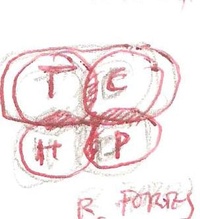REVISITING THE POST-CIAM GENERATION: debates, proposals and intellectual framework.

Call for papers
Issued by
Architectural Studies research group - Axis: Strong Relations
CEAA | Centro de Estudos Arnaldo Araújo [Arnaldo Araújo Research Center]
of Escola Superior Artística do Porto, Portugal
in collaboration with University Rennes 2, France
In August 1956, Jose Luis Sert opened the Congrès Internationaux d’Architecture Moderne (CIAM 10), held in Dubrovnik, by reading the well-known message of Le Corbusier in which he justified his absence by claiming the existence of a generational tension. Indeed, the doctrinarian values of modernism — such as functionalism, scientific progress, and rational social planning — that once drove the congress were challenged by a group of young architects and resulted in the emergence of new perspectives. Yet, this “generation” was far beyond from being a homogeneous group both in conceptual and geographical terms.
In Portugal, immediately after that moment, the magazine Arquitectura completely redefined its editorial structure, starting a new edition in early 1957. Gathering a young group of architects, art historians, and critics of art and cinema, this magazine furthered the questions launched at CIAM, thus debating the duties and role of the critic, and scrutinizing the “strong relation” (Vieira de Almeida, 2012) between theory, criticism, history and architectural design.
Some of the actors and the narratives they shaped in this moment of change are widely known in architectural studies. However, the distinct manner of intellectual appropriation and critical reception of this debate in a transnational perspective is a matter that should be re-examined. How was the debate reabsorbed by architectural criticism in different geographical areas? What was its actual impact on the mechanisms of mediation as well as on the profile of the agents of criticism?
This symposium intends to address these questions. The aim is to examine, in a comparative view, the ways in which the same debate was received, discussed and disseminated in different regions, on one hand; and to understand how this moment contributed to a rethinking of the relation between architectural practice and critical production, on the other.
We welcome papers that offer new insights on the topic by exploring themes such as: the circulation of ideas and the contribution of different regions to the 1960s and 1970s architectural culture; the relation between architecture and political engagement; the interaction between theoretical-critical production and architectural design; the mechanisms and strategies of dissemination (journals, books, manifestos, movies, documentaries, etc.); the introduction of concepts from other fields of knowledge and the inclusion of social sciences in architecture writing; the critical analyses of the historiography produced on the period.
We welcome proposals for 20-minute presentations in English, which should include:
Title of the proposal Applicant’s identification (name, institution, country, position and email) Abstract (up to 300 words) Short curriculum vitae (up to 100 words)
Proposals must be sent in Word (.doc format) by email to ceaa.g1.e2@gmail.com
Important dates:
Deadline for abstract submission – October 12, 2018 (deadline extensión)
Notification of acceptance of abstract – November 5, 2018 (deadline extensión)
Deadline for full paper submission – January 7, 2019
Papers review – February 11, 2019
Final full paper submission - March 18, 2019
Deadline for Registration – March 18, 2019
Conference – April 11-13, 2019
more inf. here